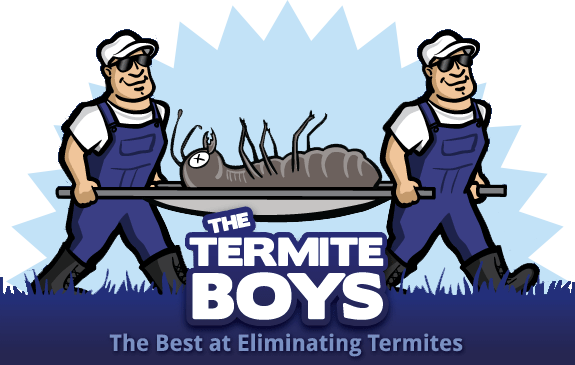When it comes to home maintenance, few things are as insidious and potentially destructive as a termite infestation. These tiny, silent invaders can wreak havoc upon a property, often without being detected until the damage is significant. For homeowners and property managers, the threat of termite damage is a serious concern, necessitating both proactive measures and swift, effective treatments.
In this comprehensive guide, we’re going to explore everything you need to know about protecting your property from termites. From the warning signs of an infestation to the cutting-edge solutions available, you’ll learn how to guard your home against one of nature’s most efficient wood-consuming organisms. Whether you’re a seasoned property owner or you’ve just ventured into your first home, understanding termites and how to deal with them is crucial knowledge that can save you from expensive repairs and significant headaches down the line.
Getting to Know Your ‘Unwelcome Guests’
Termites are often mistaken for ants due to their similar size and social behavior, but these insects are more closely related to cockroaches than they are to ants. The most common types of termites found in the US are subterranean, dampwood, and drywood termites, each with distinctive behavior patterns.
Subterranean Termites
Subterranean termites live underground and build intricate tunnel systems, known as mud tubes, to reach food sources and protect their nests. They feed on anything containing cellulose, which includes wood, paper, and various kinds of plant matter. These termites can cause significant damage to a home in relatively little time.
Dampwood Termites
These termites are larger than the subterranean variety and require wood with a higher moisture content, often found in decaying wood or wood that’s in direct contact with the ground. These termites are less common, but can also cause severe damage if left unchecked.
Drywood Termites
Unlike the other two species, drywood termites do not require contact with the soil and don’t build mud tubes. They infest dry wood and often establish nests in the structural timber of buildings, without any obvious contact with the ground.
Signs of an Infestation
Detecting termites early can be the difference between a quick, inexpensive fix and a lengthy, costly repair process. Some key signs to watch for include:
Hollow-sounding Timber
Termites will eat wood from the inside out, leaving a thin veneer that can sound hollow when tapped.
Discarded Wings
Reproductive termites, also known as swarmers, will shed their wings after finding a new place to start a colony.
Mud Tubes
Subterranean termites build these to travel between the nest and their food source, often along the side of a house or foundation.
Frass
This is a powdery, termite waste material that is pushed out of tiny holes as termites eat their way through infested wood.
Bubbling or Cracked Paint
As termites eat wood, they can sometimes cause paint to bubble or crack as they move along wood structures.
Sagging Floors or Ceilings
If the termites have consumed enough wood in a particular area, it can lead to structural damage, which can manifest as a sagging floor or ceiling.
Visible Termites
Sometimes, you might be lucky (or unlucky) enough to actually see the termites, usually in the form of swarmers or workers.
Prevention Strategies
Termite prevention is about making your property less appealing as a food source and habitat for these pests. Here are some proactive measures to consider:
Eliminate Moisture Around Your Property
Since subterranean termites need moisture, it’s crucial to ensure your property is dry. Repair leaky faucets and eliminate standing water around the property, especially near the foundation.
Reduce Wood-to-Soil Contact
Store firewood, lumber, or any kind of plant material away from your home and off the ground. Make sure none of these materials touch the actual structure of your property.
Seal Cracks and Openings
Termites can enter through the tiniest of openings, so seal cracks in your home’s foundation and keep vents clear to prevent any blockage that could lead to excessive moisture buildup.
Monitor for Signs
Regularly inspect the interior and exterior of your house for signs of termite activity, especially around potential entry points like windows, doors, and the foundation.
Professional Help
When it comes to dealing with termites, professional help is often essential. Here’s what a professional termite service can offer:
Termite Inspection
A thorough inspection of your property to determine the extent of the infestation and the species of termite involved.
Customized Treatment Plans
Based on the findings of the inspection, a professional will work with you to develop a treatment plan, which may include liquid treatments, baiting systems, or wood treatments, depending on the severity of the infestation.
Monitoring and Maintenance
Once the termites are eradicated, monitoring and ongoing maintenance are vital to prevent future infestations.
Eco-Friendly Solutions
Many professional termite services now offer environmentally-friendly options, using methods that have minimal impact on the environment and less toxic substances.
DIY Options
For the more adventurous and budget-conscious, there are several DIY approaches to termite control. These typically fall into the following categories:
Liquid Termiticides
Applied to the soil or directly to wood, liquid termiticides can create a barrier termites won’t cross.
Baiting Systems
These systems use slow-acting toxicants that termites bring back to the colony, effectively eliminating it over time.
Wood Treatment
Treating the wood itself with termiticides can provide long-term protection against future infestations.
Remember, while DIY options exist, they may not be as effective or as long-lasting as professional treatments, so consider the risks and benefits carefully.
The Cost of Termite Prevention
The cost of termite prevention can vary greatly depending on the size of the property, the severity of the infestation, the treatment method used, and the service provider. Here’s what you can expect:
Inspection Costs
An initial inspection can range from $75 to $150, depending on the size of the property and the company.
Treatment Costs
Actual treatment costs can vary dramatically, from a few hundred dollars for spot treatments to several thousand for a whole-house fumigation.
Ongoing Maintenance
Annual monitoring and maintenance can cost anywhere from $100 to $300, but may save you thousands in potential damage repairs.
Termite-Proofing During Construction
Building a new home offers a unique opportunity to implement termite-proofing measures from the ground up. Here are some strategies:
Using Termite-Resistant Materials
New innovations in construction materials include those which are naturally resistant or treated to resist termite damage.
Physical Barriers
Install metal and concrete barriers during construction to prevent termites from entering through the foundation.
Implementing Proper Drainage
Design the property’s drainage systems to ensure water is directed away from the structure, reducing moisture and thus termite attractiveness.
How Climate Affects Termites
Termites thrive in warm, humid conditions, so climate plays a significant role in their activity:
Seasonal Patterns
Termite activity can be more pronounced during certain times of the year, with many species swarming in the spring.
Regional Differences
Different types of termites are more prevalent in certain regions, often based on local climate and environmental factors.
Understanding how climate influences termites can help you be more vigilant during peak activity periods and understand the risks associated with your geographic location.
The Long-Term View
Protecting your property from termites, whether through prevention or treatment, is not a one-time event. It’s an ongoing commitment to vigilance, maintenance, and early intervention. By taking a long-term view and staying informed about the latest advances in termite control, you can ensure your property remains termite-free for years to come.
In conclusion, knowledge is your best defense against termites. Understanding their behavior, the warning signs of an infestation, and the available prevention and treatment methods empowers you to take action that can save you time, money, and stress. Whether you choose to engage a professional service or tackle the issue yourself, the most important step is to start protecting your property today. After all, with termites, the adage holds true: an ounce of prevention is worth a pound of cure.

